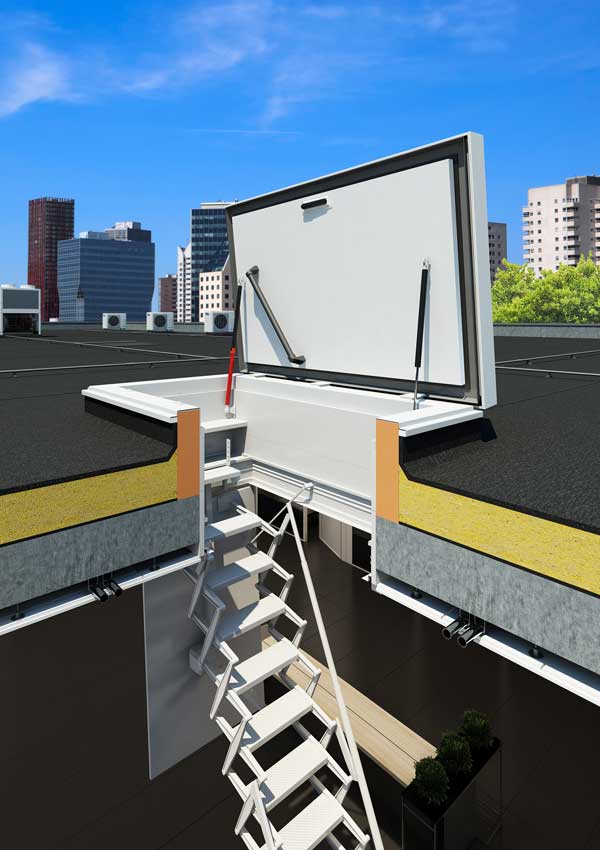Thermal insulating value of a roof hatch
Customer demand for sustainable solutions continues to increase. As a result, builders and manufacturers of construction materials and building products are required to collaborate more closely in order to achieve the most sustainable performance.
An important criterion for this performance is, of course, the thermal insulating value of the structure to be built.
The thermal insulation determines the degree to which cold exterior air can penetrate the building and warm interior air can escape outside. The goal is to achieve an optimum interior climate with minimum energy use.
Thermal characteristics of a roof hatch
As a manufacturer of roof access hatches, Staka believes it is essential to continuously search for smart, innovative ways to achieve even better performance for the thermal insulation of our roof access hatches. Roof access hatches naturally have better insulation than skylights or comparable products like rows of roof windows or other windows with synthetic frames. However, different roof access hatches can vary widely in their thermal insulating values.
This is due to a number of causes. Firstly, manufacturers use different types and thicknesses of insulating materials in the cover of the roof access hatches. Staka uses insulating material that has the best U-value (heat transfer coefficient) currently available on the market; we also closely follow developments in the insulation market so that we can quickly apply new innovations in our roof access hatches.
Secondly, the thermal insulating value of the insulating material will only work most effectively when roof access hatches can be closed thoroughly airtightly. In order to achieve this, Staka uses a durable neoprene rubber on the cover, sturdy stainless steel hinges, and a two-point closure.

- 2026 © STAKA Bouwproducten B.V.
- PostAds
- All rights reserved.

 UK
UK Nederlands
Nederlands Deutschland
Deutschland US
US La France
La France


